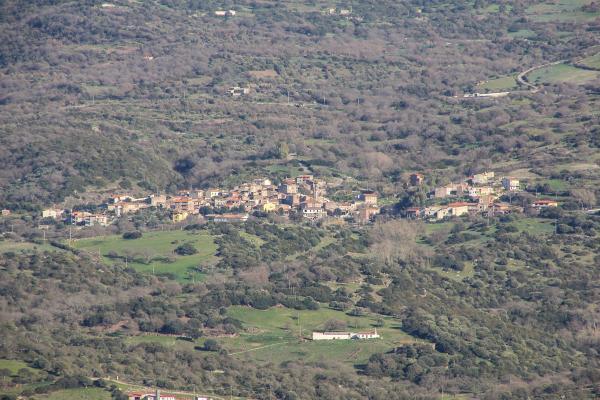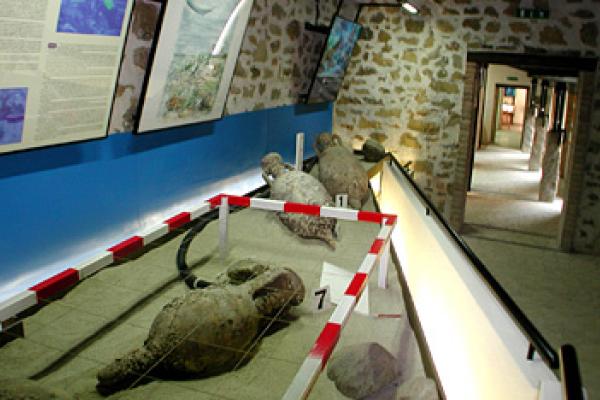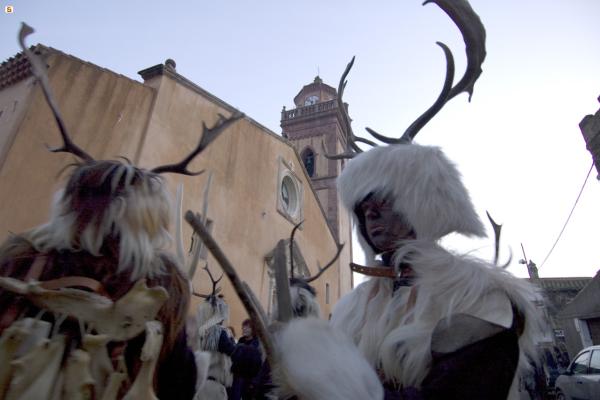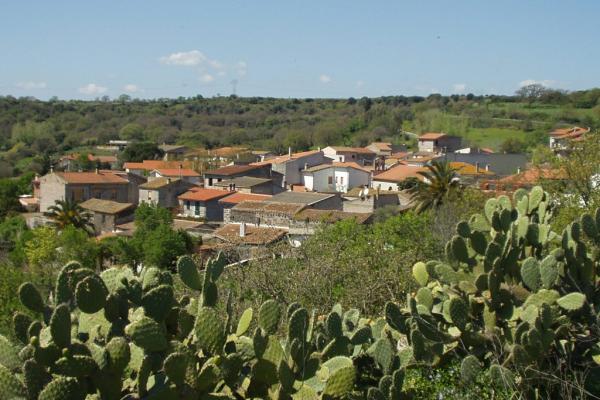Perched on a ridge of volcanic rock, surrounded by Mediterranean shrubs, common and downy oaks, it overlooks a splendid panorama of Lake Omodeo, near the imposing Mount Santa Vittoria, which gave it its name along with nocetum, used in the past to describe an area rich in walnut trees. Nughedu Santa Vittoria, a small farming community of 500 inhabitants in Barigadu, on the north-eastern edge of the Province of Oristano, offers surprising natural sites: spectacular granite peaks and masses of strange shapes that stand out against the greenery, springs and rivers. The mountain is embellished by century-old holly and cork oaks of Assai forest, which is a heaven for animal life including red and fallow deer. In Alamoju, there is an Oasis of Assai Museum, housing a collection of taxidermy mammals and birds (including a golden eagle), a xylotheque, a mineral and fossil collection, and a reproduction of a forest corner.
Perched on a ridge of volcanic rock, surrounded by Mediterranean shrubs, common and downy oaks, it overlooks a splendid panorama of Lake Omodeo, near the imposing Mount Santa Vittoria, which gave it its name along with nocetum, used in the past to describe an area rich in walnut trees. Nughedu Santa Vittoria, a small farming community of 500 inhabitants in Barigadu, on the north-eastern edge of the Province of Oristano, offers surprising natural sites: spectacular granite peaks and masses of strange shapes that stand out against the greenery, springs and rivers. The mountain is embellished by century-old holly and cork oaks of Assai forest, which is a heaven for animal life including red and fallow deer. In Alamoju, there is an Oasis of Assai Museum, housing a collection of taxidermy mammals and birds (including a golden eagle), a xylotheque, a mineral and fossil collection, and a reproduction of a forest corner.
In the centre of the oldest town in the country, a municipality since 1947, among 16th century Spanish-influenced houses, the eye is drawn to the Parish of San Giacomo (16th century) with a façade characterized by a splendid rose window and late-Mannerist gate. The cross-vaulted interior follows the Catalan Gothic tradition: the sole nave has pointed arches and barrel-vaulted chapels. Two kilometres from the town, where an ancient Benedictine Monastery (perhaps 11th century) once stood, now stands the Novenario di San Basilio Magno. The International Catalan Gothic style country church (dating to the first quarter of the 17th century), is embellished by a portico supported by columns with elegant trachyte capitals and an open gallery surrounded by fifteen muristenes, modest accommodations used by pilgrims during the novenas.
Nughedu has prehistoric origins. The necropolis of S’Angrone and of Sas Arzolas de Goi, close to town, date to the Neolithic. The latter is composed of seven Domus de Janas with a total of 18 chambers cut into the rock. Inside, you will see sculpted bull heads painted in ochre symbolizing the renewal of life. The area was also occupied more recently, as seen from the various nuraghes. The most characteristic is the protonuraghe Su Casteddu, surrounded by a grouping of sheds and a megalithic structure that is reminiscent of both dolmen and Giant’s tombs. Local cuisine also has ancient roots: visitors can try genuine, tasty dishes at festivals. The celebrations are concentrated in the summer: from the patron saint’s Feast Day in late July, to the Feast of Saint Vittoria in early August and of Saint Basilio in early September. In the summer, the town transforms into a large restaurant under the stars for the Social Eating event: the eating hall is the churchyard of the Church of San Giacomo, the cooks and servers are the town’s inhabitants directed by award-winning chefs. In autumn, visitors are received directly in the homes. Every year, Nughedu participates in the Dromos Festival of music.

















